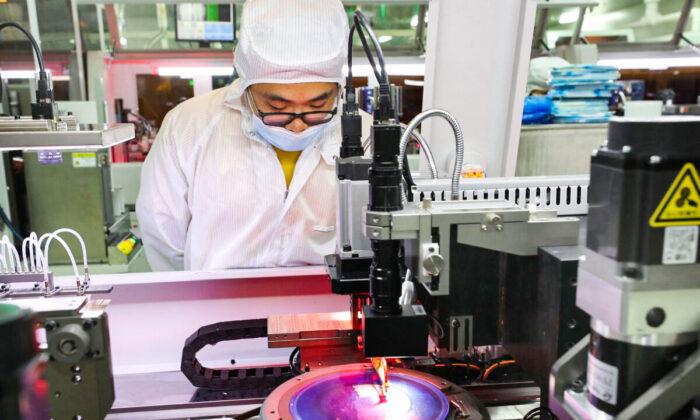Global food prices have risen for the twelfth month in a row, (39.7 percent in May from a year earlier), the highest since September 2011, according to the latest figures from the UN Food and Agriculture Organization (FAO). There are concerns that China, the world’s largest food importer, will face a food crisis.
According to a report released by the FAO on June 3, the average food price index in May was 127.1 points, up 4.8 percent from April and 39.7 percent higher than May 2020. It is only 7.6 percent below the peak of 137.6 that occurred in February 2011.
Among the indicators, the grain price index averaged 133.1 points in May, up 6.0 percent month on month (MoM) and 36.6 percent year over year (YOY). Among the major grains, corn prices rose the most, 8.8 percent M0M and 89.3 percent YOY, the highest since January 2013. Wheat prices rose 6.8 percent MoM and 28.5 percent YOY.
Russia immediately issued a warning that it is going to further restrict food exports to curb inflation. The Kremlin has already capped the domestic cost of such staples as sugar and flour as food prices continue to rise.
China’s Food Demands Driving up Global Prices
China’s surging demand for grains and soybeans is one of the main reasons for soaring global food prices, The Financial Times reported on June 3, citing experts. In addition, a severe drought in Brazil and the increased demand for vegetable oil to produce biodiesel are also contributing to the higher prices.According to China’s General Administration of Customs, China imported 6.07 million tons of grain and grain flour in May, up 143.9 percent YOY. From January to May, grain and grain flour imports totaled 27.11 million tons, up 190.5 percent YOY.
During the period, corn imports were 11.73 million tons, up 322.8 percent YOY; Wheat imports were 4.61 million tons, up 88.9 percent YOY. Barley and sorghum imports reached 4.65 million and 3.69 million tons, a YOY growth of 139.1 percent and 237 percent, respectively.
Last year, China’s accumulative food imports rise to 142.62 million tons, up 27.97 percent YOY. Both the import volume and the growth rate hit new highs in recent years. The imports of corn and wheat reached a record high of 11.3 million tons and 8.38 million tons, respectively, showing a YOY growth of 135.7 percent and 140.2 percent.
When speaking about China’s soaring food imports, Huang Hanquan, head of the price and cost investigation center at the CCP’s National Development and Reform Commission, acknowledged in Nov. that the two main reasons for the surge were fast growth in domestic demand and the food price inversion (i.e. domestic food prices higher than imported food prices) at home and abroad.
Not Enough Food in China
In 2019, Yuan Longping, the well-respected “father of hybrid rice” in China and an academician of the Chinese Academy of Engineering, said in an interview with CCTV that “China has a population of nearly 1.4 billion. China doesn’t have enough food [to feed people]. We have to rely on food imports to make up the gap...If foreign countries refuse to sell food to China, then it’ll be a trouble. [We]’ll face hunger.”China’s Food Supply Has Long-Term Risks
There was no immediate official response from the CCP to news of soaring international food prices; yet subsidy policies were announced two weeks later. On June 18, CCP Premier Li Keqiang presided over an executive meeting of the State Council and decided to provide a one-time subsidy of approximately $3 billion to grain farmers in response to the rapid rise in agricultural prices this year.Mike Sun, a U.S.-based expert on China’s foreign trade and China Investment Strategy, told The Epoch Times that the CCP introduced the subsidies in order to stabilize food prices. Based on Sun’s analysis, China may not have a food crisis in the next few years, but there will be hidden dangers in the long run.
According to the Integrated Food Security Phase Classification (IPC), a level III “food security crisis” means that households are severely malnourished or must spend all their income to meet the most basic food needs, he explained. The more serious fourth and fifth levels correspond to “emergency” and “disaster/famine” respectively.
Sun said China is mainly importing a large amount of grain for fodder now, including corn and soybeans. It is also importing wheat for human consumption. In the short term, China’s food supply should not be a problem, as there are some reserves in addition to domestic grain rations. However, in the long run, long-term reliance on imports is likely to cause a food crisis in the event of an unforeseen emergency or catastrophe.





